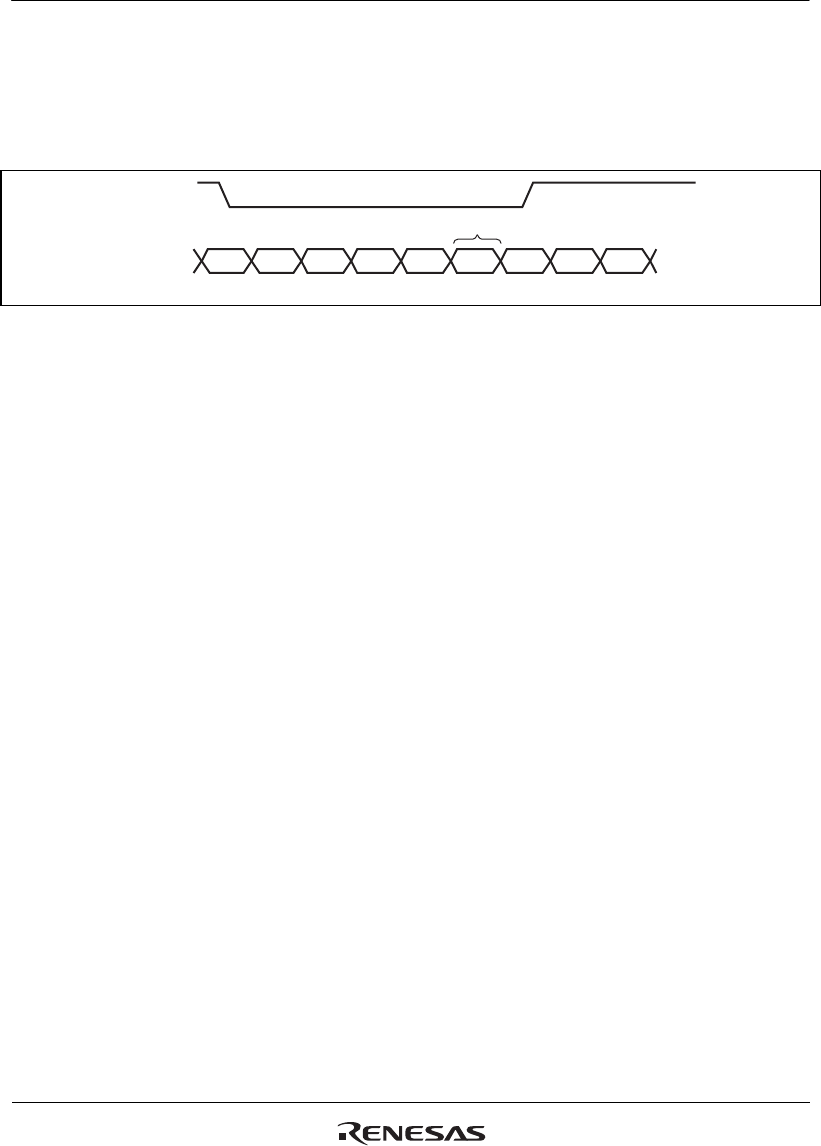
Section 10 Direct Memory Access Controller
Page 422 of 2108 R01UH0134EJ0400 Rev. 4.00
Sep 24, 2014
SH7262 Group, SH7264 Group
Figure 10.7 shows an example of DMA transfer timing in cycle-steal normal mode. Transfer
conditions shown in the figure are;
Dual address mode
DREQ low level detection
CPU CPU CPU DMA DMA CPU DMA DMA CPU
DREQ
Bus cycle
Bus mastership returned to CPU once
Read/Write Read/Write
Figure 10.7 DMA Transfer Example in Cycle-Steal Normal Mode
(Dual Address, DREQ Low Level Detection)
Intermittent Mode 16 and Intermittent Mode 64
In intermittent mode of cycle steal, this module returns the bus mastership to other bus master
whenever a unit of transfer (byte, word, longword, or 16 bytes) is completed. If the next
transfer request occurs after that, this module obtains the bus mastership from other bus master
after waiting for 16 or 64 cycles of B clock. This module then transfers data of one unit and
returns the bus mastership to other bus master. These operations are repeated until the transfer
end condition is satisfied. It is thus possible to make lower the ratio of bus occupation by
DMA transfer than the normal mode of cycle steal.
When this module obtains again the bus mastership, DMA transfer may be postponed in case
of entry updating due to cache miss.
The cycle-steal intermittent mode can be used for any transfer section; transfer request source,
transfer source, and transfer destination. The bus modes, however, must be cycle steal mode in
all channels.
Figure 10.8 shows an example of DMA transfer timing in cycle-steal intermittent mode.
Transfer conditions shown in the figure are;
Dual address mode
DREQ low level detection


















